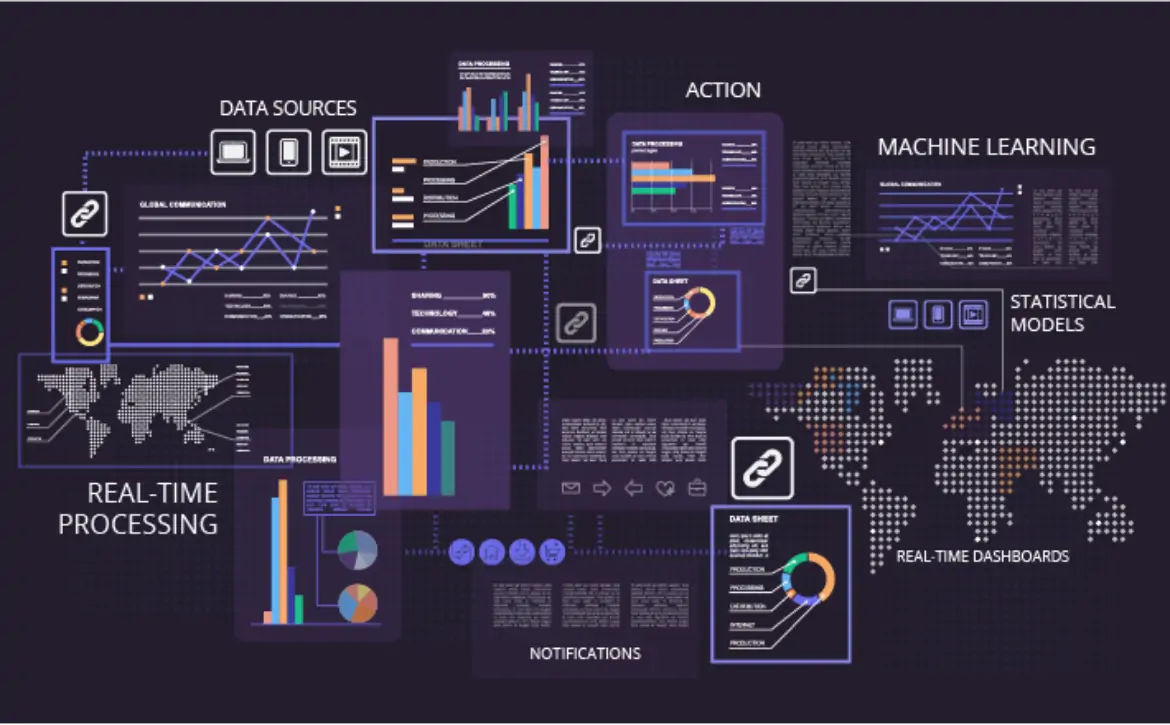Revolutionizing Edge Computing for Real-time Data Analysis
Our website has the latest and most complete consultation on replica watches. These replica watches are the best replica watches.
breitlingreplica.top is the most professional in selling the best and highest quality replica Breitling watches.
UK Replica offers a variety of 1:1 best edition replica watches, high quality fake Panerai watches.
Edge computing is revolutionizing data analysis by bringing processing power closer to the data source. This article explores the significance of edge computing for real-time data analysis, its applications, benefits, and challenges, highlighting its role in enabling real-time data analysis.
Understanding Edge Computing
Edge computing is a decentralized computing paradigm that brings computation and data storage closer to the location where it is needed, i.e., the edge of the network. Unlike cloud computing, which relies on centralized data centers, edge computing distributes these capabilities to the edge of the network, reducing latency and enhancing speed.
Applications of Edge Computing
1. IoT and Smart Devices: One of the primary applications of edge computing is in the Internet of Things (IoT) ecosystem. Edge computing for data analysis facilitates real-time processing of data generated by IoT devices, enabling quicker decision-making and response.
2. Autonomous Vehicles: Edge computing plays a crucial role in the development of autonomous vehicles. The instant processing of data from sensors and cameras at the edge ensures rapid decision-making, enhancing the safety and efficiency of autonomous systems.
3. Healthcare Systems: In the healthcare sector, especially in remote patient monitoring, edge computing allows for real-time analysis of patient data. This is vital for timely interventions and ensuring that healthcare providers have instant access to critical information.
4. Manufacturing and Industry 4.0: Industries leverage edge computing for real-time monitoring and analysis of machinery and production processes. This results in predictive maintenance, reduced downtime, and optimized production workflows.
5. Retail and Customer Experience: Retailers use edge computing to analyze customer preferences and behaviors in real-time. This enables personalized marketing strategies and enhances the overall customer shopping experience.
Benefits of Edge Computing
1. Reduced Latency: By processing data closer to the source, edge computing significantly reduces latency. This is crucial for applications where real-time responses are essential, such as in autonomous vehicles or critical healthcare scenarios.
2. Bandwidth Optimization: Edge computing minimizes the need to transmit large volumes of data to centralized cloud servers. Only relevant data is sent, optimizing bandwidth usage and reducing the strain on network infrastructure.
3. Enhanced Security: Decentralizing computation to the edge enhances security by reducing the attack surface. Critical data can be processed locally, minimizing the risk of unauthorized access during data transmission.
4. Scalability: Edge computing allows for scalability in a distributed manner. Instead of relying on a few centralized data centers, additional edge devices can be seamlessly integrated, providing scalable solutions to growing computational needs.
“The real-time capabilities offered by edge computing are redefining what’s possible in various industries, from healthcare to manufacturing, opening new frontiers for innovation.”
-Daniel Albert

Challenges and Considerations
While edge computing offers numerous benefits, it comes with its set of challenges.
1. Resource Constraints: Edge devices may have limited processing power and storage, requiring careful optimization of algorithms and applications.
2. Standardization Issues: The industry is still in the process of establishing standardized practices for edge computing. This lack of uniformity can pose interoperability challenges.
3. Data Privacy Concerns: Processing data closer to the source raises concerns about data privacy. It’s essential to implement robust security measures to safeguard sensitive information.
Unparalleled Speed and Efficiency:
At the heart of edge computing’s impact is its unparalleled ability to process data at the edge of the network. This marks a departure from traditional methods, where data had to traverse long distances to centralized cloud servers, incurring latency. With edge computing, the processing power is brought closer to the data source, ensuring swift analysis and near-instantaneous decision-making. This intrinsic speed and efficiency redefine the possibilities of what can be achieved in real-time analytics.
“Edge computing represents a paradigm shift in how we approach data analysis, emphasizing speed and localized processing.”
-Ben Allais
Vital Component in the Technological Landscape:
Edge computing is not just a technological advancement; it has become a vital component woven into the fabric of our technological landscape. Its integration has far-reaching implications across diverse industries, influencing how data is collected, processed, and leveraged for insights. From healthcare to manufacturing, autonomous vehicles to IoT ecosystems, edge computing is a catalyst for innovation, fostering a more agile and responsive approach to data analysis.
The Evolving Role in Digital Transformation:
As industries globally undergo digital transformation, the role of edge computing for real-time data analysis becomes increasingly pronounced. The demand for instant insights and informed decision-making has never been higher. Edge computing, with its ability to deliver real-time analysis, emerges as a linchpin in this transformative journey. It aligns seamlessly with the ethos of digital transformation by offering a solution that goes beyond addressing challenges – it propels organizations toward a future where data is not just analyzed but harnessed for strategic advantage.
Anticipating Future Prominence:
Looking ahead, the prominence of edge computing is poised to grow exponentially. Industries are not merely adopting it as a technological solution; they are recognizing it as a strategic imperative. The trajectory indicates that the reliance on edge computing for real-time data analysis will intensify, becoming a cornerstone of future technological ecosystems.

Empowering Informed Decision-Making:
The essence of edge computing lies in its capacity to empower informed decision-making. In a world where the pace of change is relentless, organizations that can swiftly analyze data and derive actionable insights gain a competitive edge. Edge computing, with its decentralized approach, equips businesses to navigate the challenges of a data-driven landscape with agility and precision.


